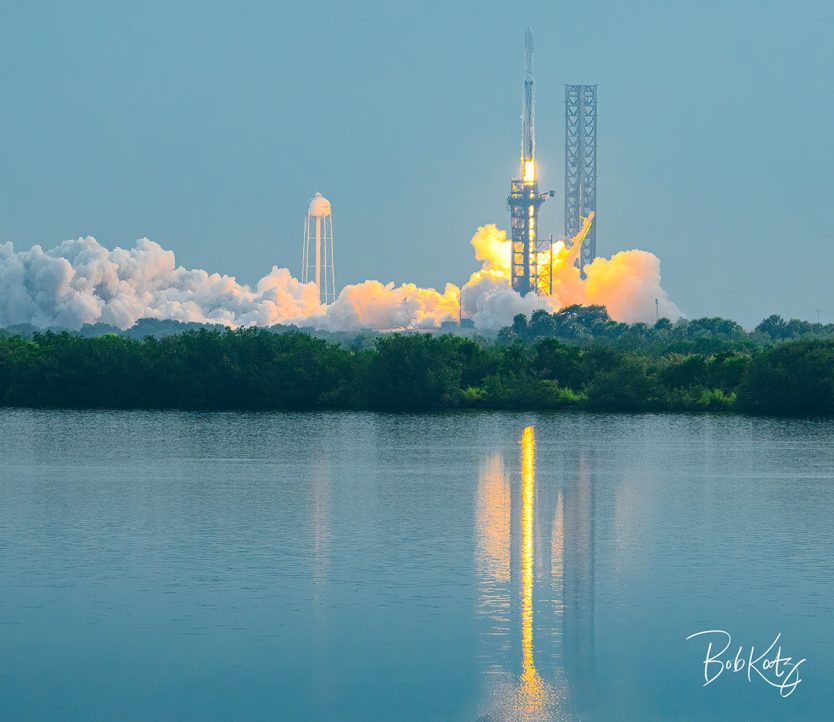October 13, 2023
Mary, Bob and Steven took a trip to the Kennedy Space Center, Cape Canaveral, Florida, where we had VIP seats to watch the launch of Falcon Heavy, for the Psyche Mission.
It’s a special treat to experience a rocket launch at close distance (3.9 miles), so I decided to take Bobby Goldenears* along to capture the launch in high fidelity binaural. A good binaural recording captures sound from all round the listener with reproduction of height, depth, and sound from all directions around the head.
Prior to the launch, I calculated the electrical level that would be produced by the DPA 4060 microphones at launch time, and adjusted the preamps of my precision Prism Lyra 2 interface so the signal would not overload. The digital output of the Lyra 2 was patched into a Tascam portable digital recorder, recorded at 24 bit/96 kHz sampling. The entire apparatus was powered by a 12 volt battery and true sine wave inverter as NASA doesn’t provide any power outlets at the viewing site.
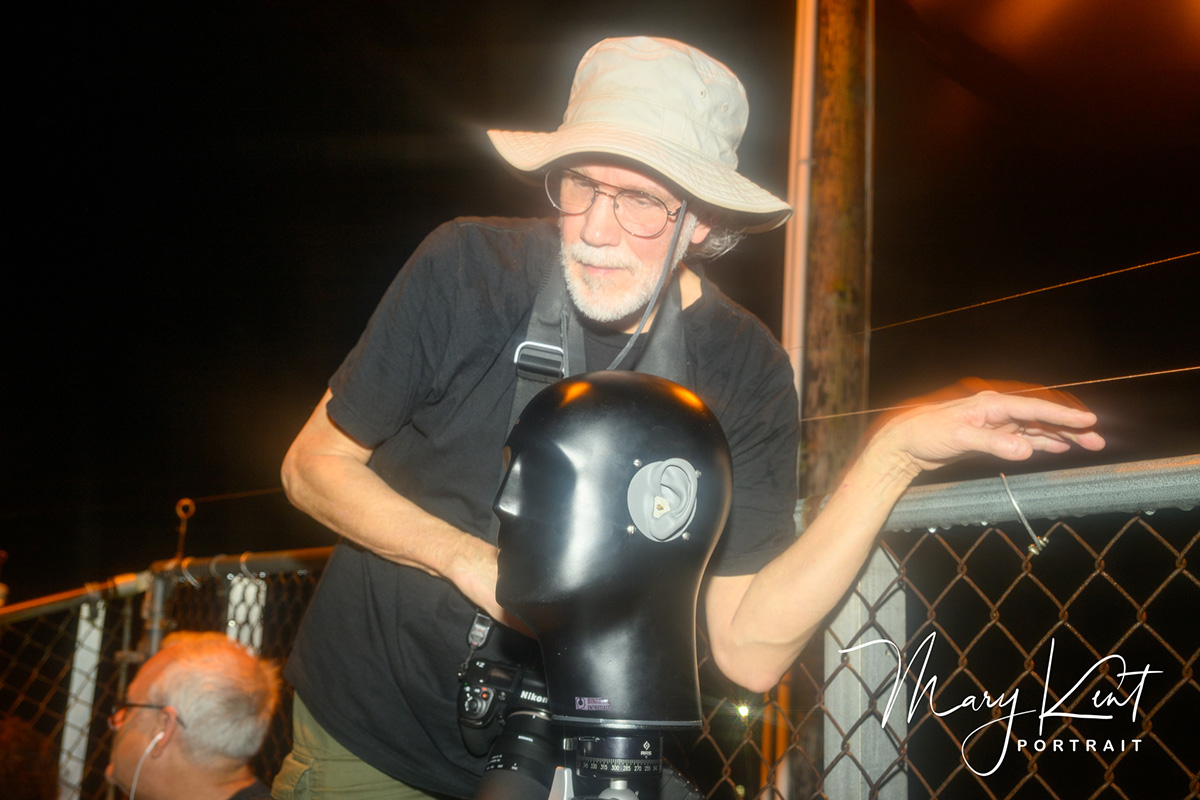
Here I am checking the azimuth and zenith of Bobby G. so his nose faces straight on to the rocket at launch. It was still dark at 6 AM, so excuse the ghosting in Mary’s camera. You can clearly see the golden-color DPA transducer at the edge of the canal of the artificial ear.
AT the Beginning of this Blog you can see my photo of the launch, reflected in the waters of Banana Creek, captured from 3.9 mile distance, at 10:19 AM
The Recording
Bobby G. is attached to a Really Right Stuff Tripod, whose feet are isolated from the NASA bleachers by three EVP isolators designed by A/V Room Service.
At 0:00, Steven's voice announces the start of the recording. Steven McDonnough ran the recording and kept a good eye on Bobby G. Since Bobby G. is located at the top of the bleachers you will hear spectators mostly in front of you and some to each side, but none behind you.
At about 2:00 into the recording you will experience the sound of the launch of the rocket. Notice how a true binaural recording captures the height of the rocket as it soars.
At about 5:44 into the recording you will experience the sonic booms from the re-entry of the Falcon Heavy Boosters to their landing spot at the Cape.
If you register (or login if you already have an account) at this site you can download this free 24 bit/96 kHz recording from our downloads section. Play the recording with the best headphones you own to experience binaural at its best.
Frequency Response of the Rocket
Just for fun, I measured the rocket's frequency response using a spectrogram. I detect that the rocket emits frequencies as low as 5 Hz and as high as nearly 48 kHz!
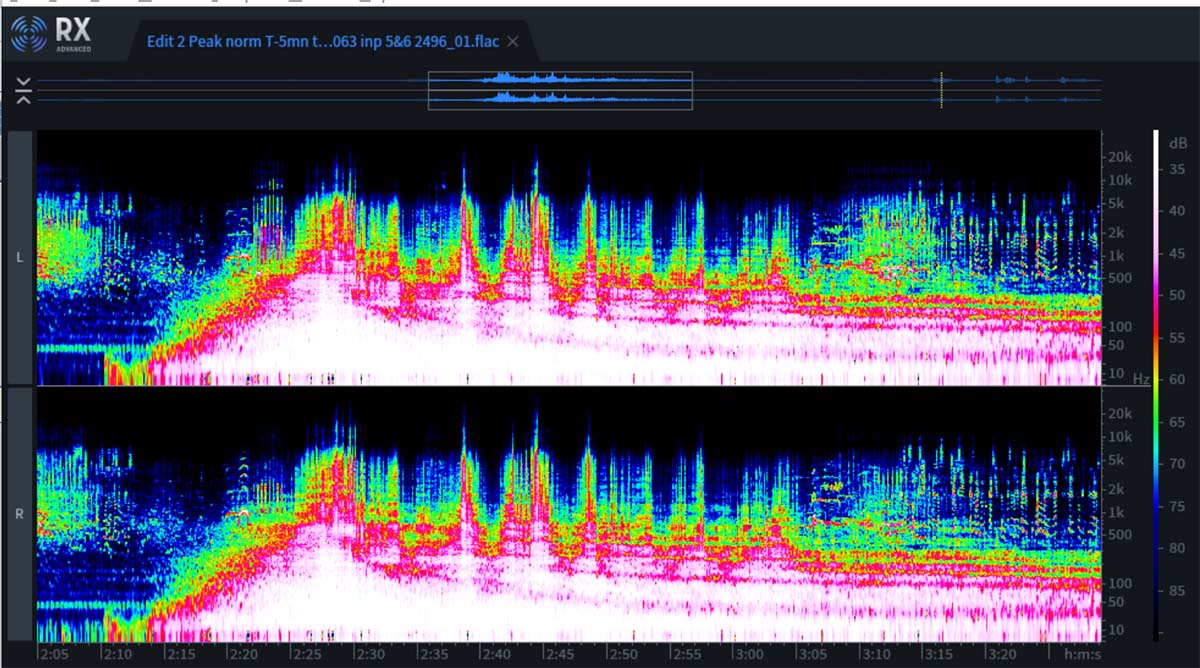
This spectrogram shows that the launch, which begins at about 2:10, creates a very strong continuous sound from below 10 Hz through about 500 Hz. This is the "roar" of the rocket. Plus, momentary energy into the extreme high frequency region, at this zoom level, evidently up to at least 20 kHz! This is the snap and pop noise from the rocket, that I call "popcorn noise". Most people who have not experienced a rocket launch close up are unaware of the popcorn noise, as "traditional" rocket recordings have not captured it. In fact, to the psychoacoustic perception of our non-linear ears, the popcorn noise dominates over the roar.
If we zoom in on the high frequency region of the launch, we can see that the rocket produces supersonic information all the way up to Nyquist, which is 48 kHz!
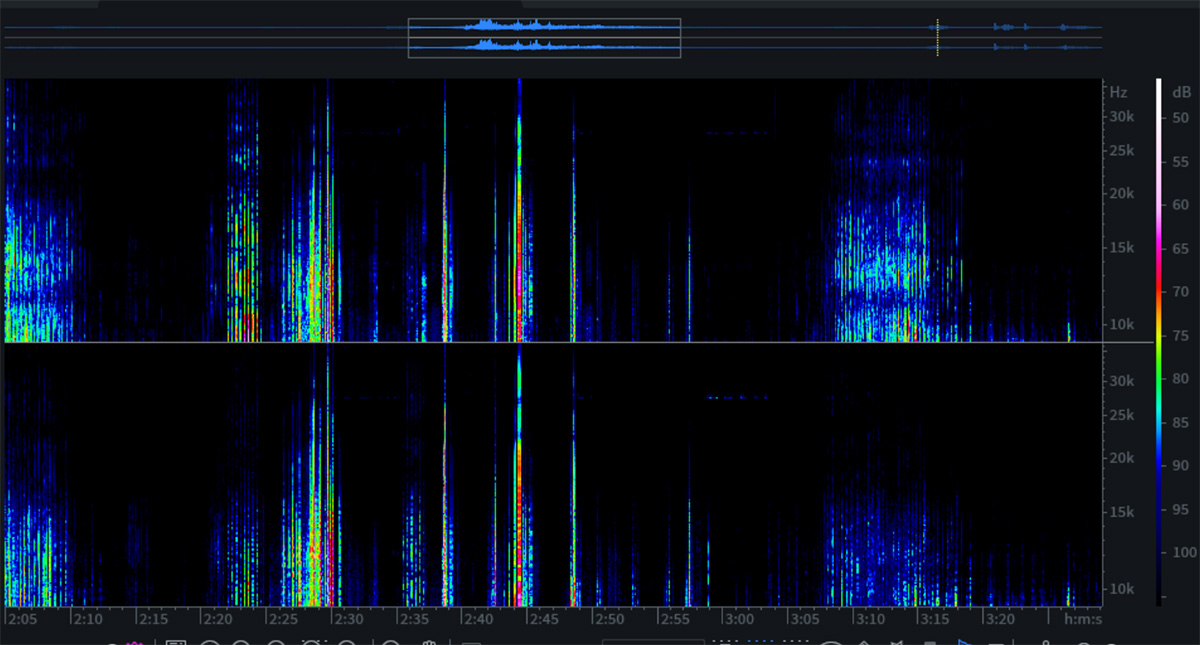
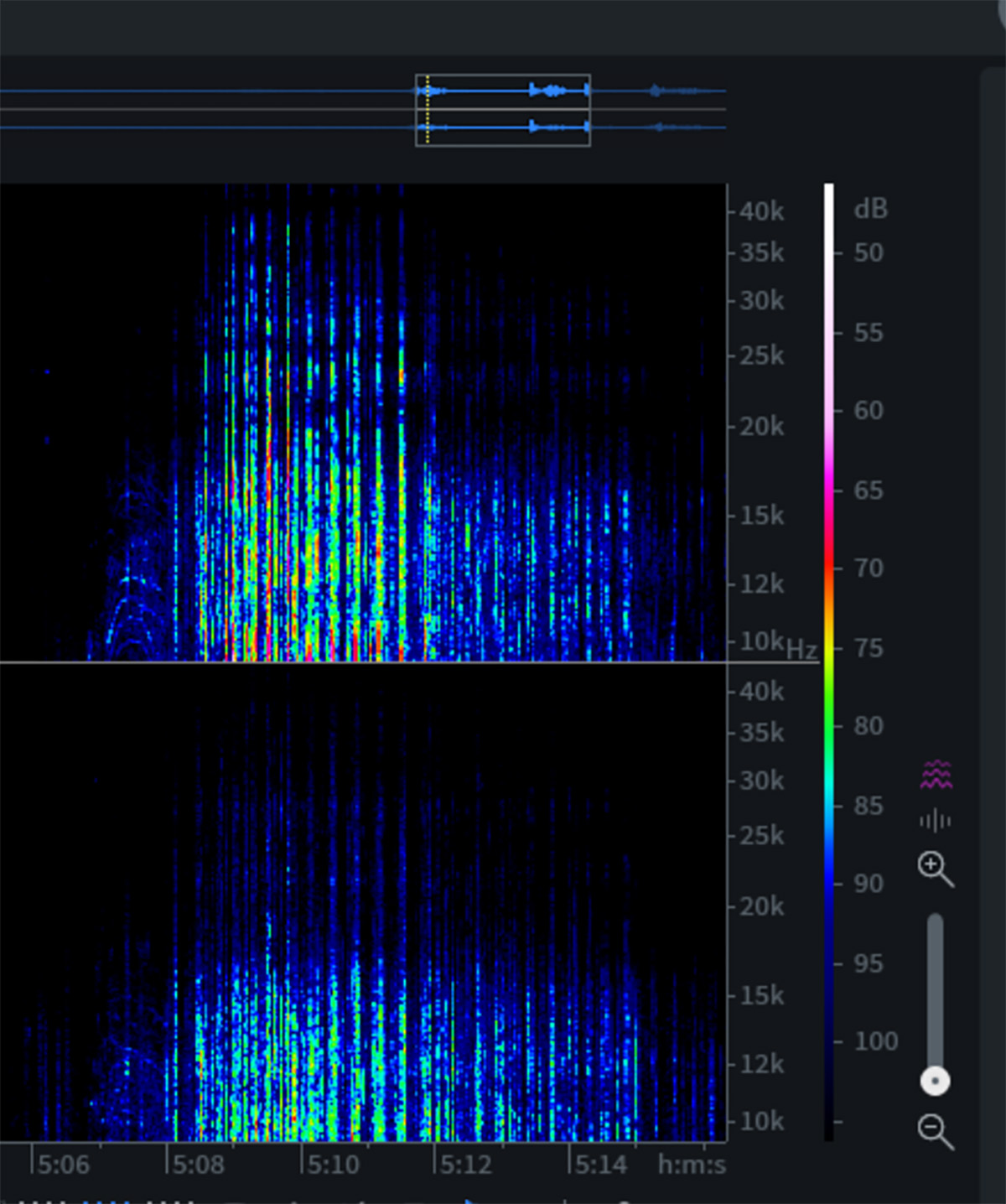
Ordinarily you would think of this as a deep, low frequency noise, and it sounds like it, but the spectrogram reveals that the transient character of the boom extends well into the high frequency region. Isn't audio engineering fun!
Enjoy!
Bob Katz Nov. 9, 2023
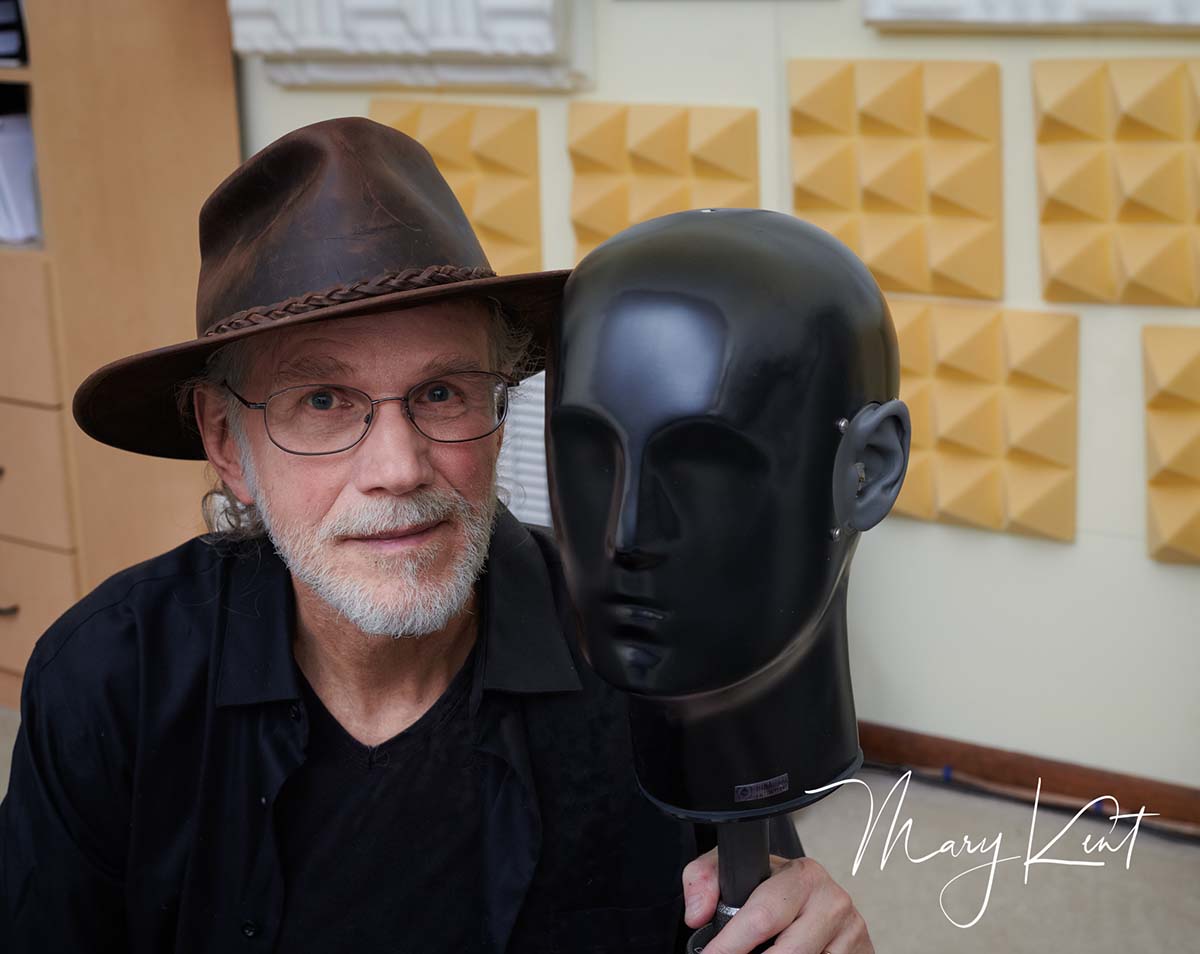
* Here’s a little story about Bobby Goldenears used as a research tool.
Share this Post

